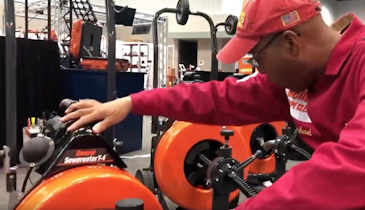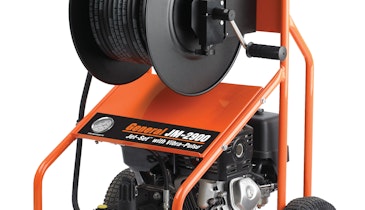Interested in Residential Plumbing?
Get Residential Plumbing articles, news and videos right in your inbox! Sign up now.
Residential Plumbing + Get AlertsSelecting a point repair method is like choosing the right tool in your toolbox. Different trenchless point repair solutions have different strengths and weaknesses, and each one has differing costs for initial capital investment and ongoing use. Getting an idea of what different methods require may give you a starting point for choosing the best option for your particular need.
Option 1: Grout
Grouting is one of the oldest (and antiquated) options. There are two major types: chemical grout and cementitious grout. Chemical grout is used to fill voids around pipes. When injected into the soil surrounding the lines, resin grout can eliminate infiltration and provide support where bedding has been washed away. Cementitious grout has traditionally been used for infiltration abatement, but it is losing favor as it struggles to handle any shifting of the pipes or surrounding earth without cracking and crumbling.
For both types of grout, the injection or application unit usually requires truck or trailer mounting. Chemical grout can also require extensive pumping/curing systems. And, depending on the type of grout you choose to offer, the cost of the grout material itself can quickly add up.
Option 2: CIPP short liner
CIPP short liners have gained in popularity as they provide the benefits of CIPP without the cost of relining an entire stable pipe.
In most instances, necessary components for short liner installation will include an installation packer and method to position it, resin, a curing source such as a boiler or UV light rig, or an air compressor. Bypass pumping equipment or other equipment might also be needed. Not every project or cure method requires all pieces, but you should know the necessary tools before investing in any new sewer rehab method.
There are convenient CIPP kits available for small, easily accessible repairs like MyTana’s new MyPatch Pipe Repair Kit. These kits contain the liner patch and measured resins as well as the tools needed for wet-out. Inflatable packers and pushrod (both reusable) for installation are offered by MyTana. An air-compressor will also be needed.
Option 3: Mechanical point repair
Mechanical point repair uses a high-pressure, specialized inflatable packer to expand a one-way locking steel sleeve at the point of damage, pressing a rubber seal against the pipe wall to eliminate infiltration and other defects. There is no resin involved, eliminating shelf-life and installation/cure time concerns.
The initial capital requirements vary because they depend on what resources you already have at your disposal. You will need a packer for the pipe size(s) you intend to support and the sleeves themselves. You also need a way to move the packer/sleeve into position for expansion. The preferred method is a crawler system or pushrod. If you already conduct pipeline inspections, the shift is easy.
The cost of repair sleeves depends on the diameter, but is minimal compared to other repair methods.
Considerations
When choosing which method to invest in, consider the types of repairs you encounter and equipment you already have. Do you have trouble finding subcontractors to help with sectional rehab?
Pipe patches and Quick-Lock are low dollar investments that contractors and municipalities can take on with little complication or overhead, using available manpower.
The team at MyTana and Pipeline Renewal Technologies can help you with your decision. Contact us for more information or to request a demo of our Quick-Lock or QuickPatch LED UV repair systems.
Call 800-328-8170 or 866-936-8476 or contact us to learn more
Visit the MyTana Storefront






